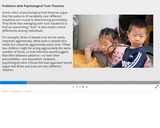
Problems with Psychological Trait Theories Slideshow
- Subject:
- Career and Technical Education
- Criminal Justice
- Material Type:
- Interactive
- Provider:
- Michigan Virtual
- Date Added:
- 07/29/2019

Problems with Psychological Trait Theories Slideshow
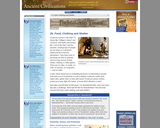
For Neanderthal Man, each and every day was a challenge. What was life like for Neanderthals? How did early humans find food, make clothing, and seek shelter?
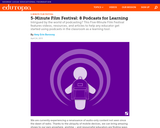
Intrigued by the world of podcasting? This Five-Minute Film Festival features videos, resources, and articles to help any educator get started using podcasts in the classroom as a learning tool.
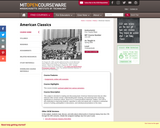
An examination of "classic" documents in American history from the seventeenth through the twentieth centuries, including writings by authors such as John Winthrop, Thomas Jefferson, and James Madison; Frederick Douglass, William Lloyd Garrison, and Abraham Lincoln; Horatio Alger, Jacob Riis and Thorstein Veblen; Franklin D. Roosevelt, Betty Friedan, Bob Dylan, and Martin Luther King, Jr. Music, taped speeches, television programs, motion pictures, and/or other visual materials may also be included. Class meetings consist primarily of discussions and there is one required museum trip.
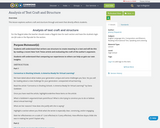
This lesson explores authors craft and structure through and event that directly effects students. Students will understand that writers use structure to create meaning in a text and will do this by reading a recent New York Times article and evaluating the craft of the author’s argument. Students will understand that comparing our experiences to others can help us gain our own insights.
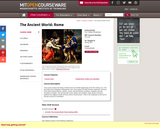
This course covers the history of Rome from its humble beginnings to the 5th century A.D. The first half covers Kingship to Republican form; the conquest of Italy; Roman expansion: Pyrrhus, Punic Wars and provinces; classes, courts, and the Roman revolution; Augustus and the formation of empire. The second half covers Virgil to the Vandals; major social, economic, political and religious trends at Rome and in the provinces. There is an emphasis on the use of primary sources in translation.
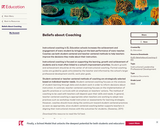
Instructional coaching in EL Education schools increases the achievement and engagement of every student by bringing out the best performance of every teacher. Coaches use both student-centered and teacher-centered methods to help teachers improve the decisions they make about their instruction.
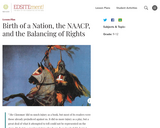
In this lesson students learn how Birth of a Nation reflected and influenced racial attitudes, and they analyze and evaluate the efforts of the NAACP to prohibit showing of the film.
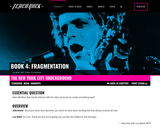
This lesson considers New York City and the cross currents that run between the worlds of music-making and the arts in a broad sense, particularly the visual and literary arts
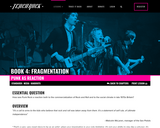
In this lesson, students will compare and contrast some of the musical and visual elements of Stadium Rock with those of Punk Rock. They will investigate how Punk grew out of the particular musical and social context of Britain in the 1970s. They will then put their knowledge to work in small groups by creating album covers for a fictitious 1970s Punk Rock band.
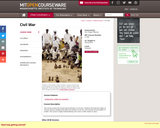
This course surveys the social science literature on civil war. Students will study the origins of civil war, discuss variables that affect the duration of civil war, and examine the termination of conflict. This course is highly interdisciplinary and covers a wide variety of cases.

"This course is an introduction to the history, theory, practice, and implications of rhetoric, the art and craft of persuasion throughAnalyzing persuasive texts and speechesCreating persuasive texts and speechesThrough class discussions, presentations, and written Assignments and Labs, you will get to practice your own rhetorical prowess. Through the readings, you'll also learn some ways to make yourself a more efficient reader, as you turn your analytical skills on the texts themselves. This combination of reading, speaking, and writing will help you succeed in:learningto read and think criticallytechniques of rhetorical analysistechniques of argumentto enhance your written and oral discourse with appropriate figures of speechsome techniques of oral presentation and the use of visual aids and visual rhetoric."
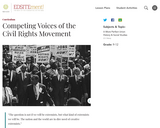
When most people think of the Civil Rights Movement in America, they think of Martin Luther King, Jr. Delivering his "I Have a Dream" speech on the steps of the Lincoln Memorial in 1963. But "the Movement" achieved its greatest results due to the competing strategies and agendas of diverse individuals.
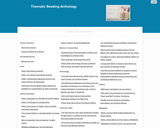
This Composition Reader is an edited, curated collection of OER material for you to use as you see fit in your course. It consists of personal essays, literature, video and audio files, web writing, and long-form journalism.

The purpose of this unit is to put students in the driver’s seat of their own reading by considering their own preferences and what it means to be a connected reader in our multi-media society.
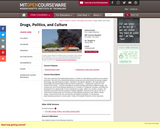
This class examines the relationship between a number of mind-altering substances and cultural processes. We look at the relationship between drugs and such phenomena as poverty, religion, technology, inter-generational conflict, colonialism, and global capitalism. We read about the physiological and psychological effects of these substances -- ranging from alcohol to LSD, cocaine and ecstasy -- and ask why different societies prohibit and sanction different drugs. We examine the use of mind-altering substances in a number of "traditional" societies, and follow the development of a global trade in such substances as sugar, coffee, tea, nicotine, cocaine, and marijuana concurrent with the evolution of global capitalism. We look at the use of LSD as a mind-control substance by the CIA and as a mind-altering substance in the 1960's counter-culture, and we look at the rise of Prozacĺ¨ and Viagraĺ¨ as popular, if controversial, pharmaceutical products in recent years. Finally, we evaluate America's current drug laws.

This WebQuest has a double focus, spanish language and Spanish Art content. It aims at making students reflect on the very nature of art taking examples from Spanish contemporary art, and also at improving Spanish language skills and art vocabulary. It promotes creativity, critical thinking, cooperative learning and uses web 2.0. tools.
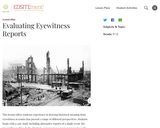
Practice working with primary documents by comparing accounts of the Chicago Fire and testing the credibility of a Civil War diary.
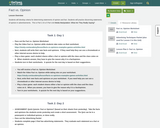
Students will develop criteria for determining statements of opinion and fact. Students will practice discerning statements of opinion in advertisements. This is Part 2 of a 5 Part Unit Media Manipulation: What Are They Really Saying?
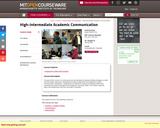
The goal of this course is to review grammar and develop vocabulary building strategies to refine oral and written expression. Speaking and writing assignments are designed to expand communicative competence. Assignments are based on models and materials drawn from contemporary media (newspapers and magazines, television, web). The models, materials, topics and assignments vary from semester to semester.